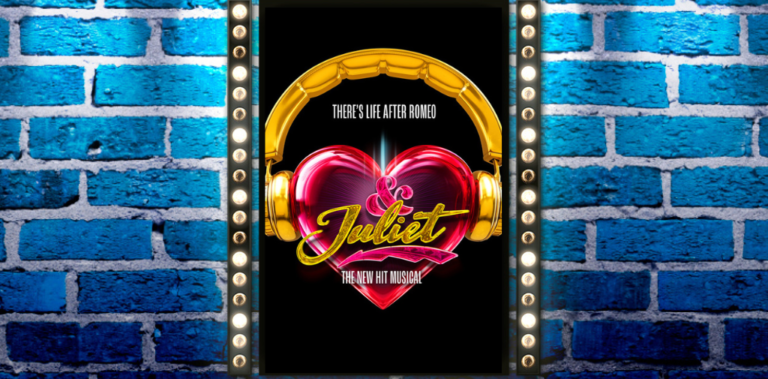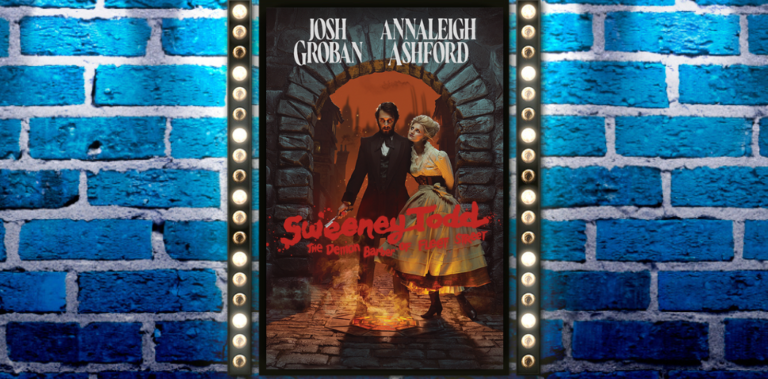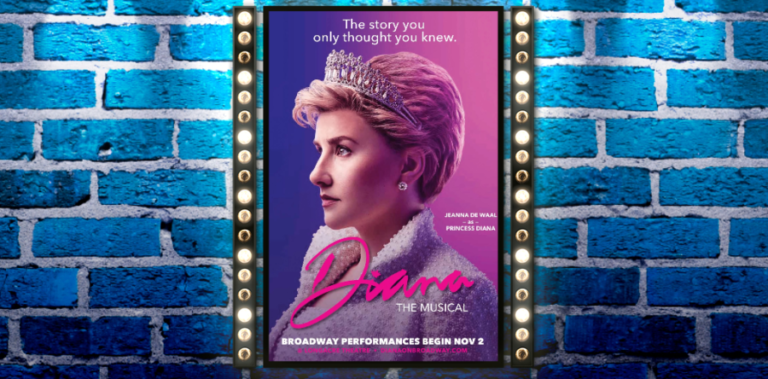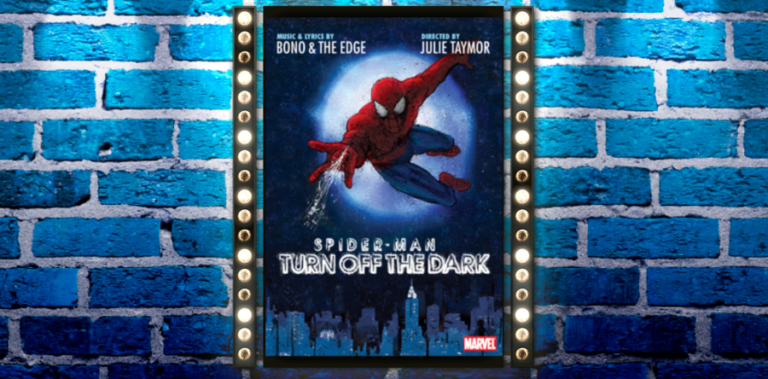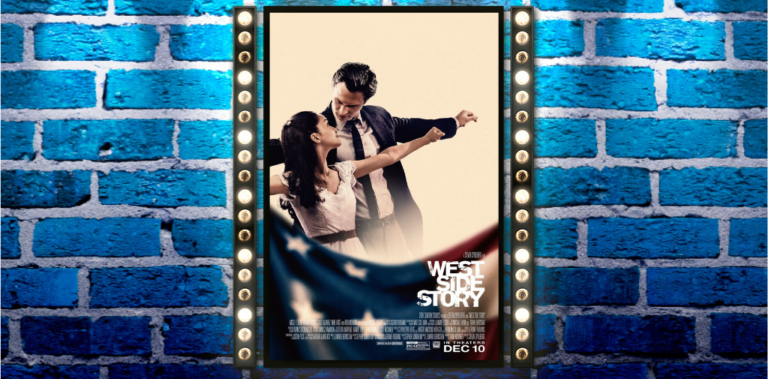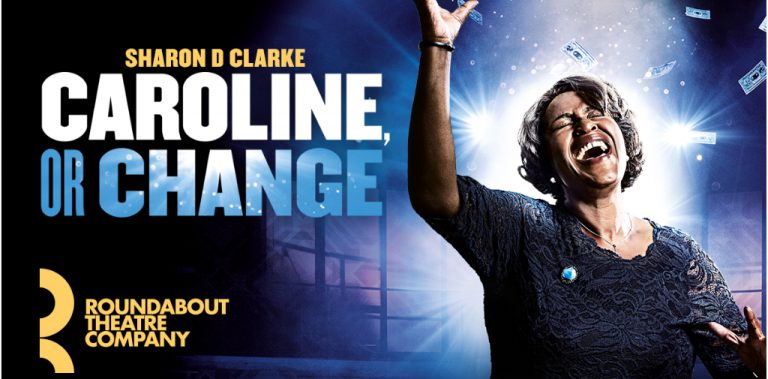 A "reincarnation" is not the same thing as a "replica" – just ask the company of the fresh and ambitious new production of On a Clear Day You Can See Forever which opened at the St. James Theatre on December 11.
A "reincarnation" is not the same thing as a "replica" – just ask the company of the fresh and ambitious new production of On a Clear Day You Can See Forever which opened at the St. James Theatre on December 11.
Excellent performances outshine even the most hallucinogenic design elements to produce a solid new adaptation of the original Burton Lane/Alan Jay Lerner show.
In 1974, floral assistant David Gamble struggles to commit to his perfect boyfriend. He seeks help from straight-laced psychiatrist Dr. Mark Bruckner, who uses hypnosis to treat David’s smokng habit and discovers who David was in a previous life, a 1940s jazz singer named Melinda Wells. David becomes smitten with Dr. Bruckner, and the love triangle is further complicated when Dr. Bruckner falls in love with the confident young lady hidden within David’s mind, blurring the line between professional conduct with his patient and personal attraction to Melinda.

This "reincarnated" version is quite different from the original 1965 production. The previous love triangle focused on a 1960s woman named Daisy Gamble, Dr. Mark Bruckner and late-18th century Englishwoman Melinda Wells. It featured only heterosexual relationships between Daisy and her boyfriend, Daisy and Dr. Bruckner, and Dr. Bruckner’s attraction to Melinda.
In changing Daisy to David, the creative team devised all new character dynamics: now David is a homosexual man, so his commitment issues are interpreted differently and complications arise from David’s attraction to Dr. Bruckner because the doctor is an unavailable heterosexual man.
Most reviews have focused heavily on the new revisions, but this tends to overlook a quality cast and how well they execute this new interpretation.

Harry Connick, Jr. leads the cast as a capable but overly restrained Dr. Mark Bruckner. Back on The Great White Way after The Pajama Game and Harry Connick, Jr. in Concert on Broadway, he croons in his signature style and sings in top vocal form, especially in "Too Late Now" and the familiar title number.
But, however lovely his singing, he comes off too stiff even for a widowed psychiatrist, which is to say he’s about as straight-and-narrow as his modular office furniture. Where is the Harry Connick, Jr. charisma that we all know and love? Connick mostly emerges from his shell as his character learns to love again, but still lacks the completely relaxed and flirtatious persona that we have seen in his concerts.
Leading up to the climactic scenes, Connick shows off his acting abilities with an impassioned performance which makes you wish his delivery had been as powerful throughout the show. Regardless, Connick proves that he is more than a recording artist and has a place as a Broadway leading man.

For a truly relaxed performance, look no further than the delightful David Turner (Arcadia; Sunday in the Park with George) as David Gamble. He is delightful from his first radiant smile and crystal-clear note of "Hurry! It’s Lovely Up Here". Turner’s youthful energy coupled with light touches of humor make David Gamble seem all more vulnerable and endearing.
His strong performance is equally matched by Jessie Mueller in her Broadway debut as Melinda, David’s former self. Mueller showcases her impeccable jazz skills with a silky, sultry big-band voice, most notably in the show-stopper "Ev’ry Night at Seven." Her vocal confidence and ease does not translate to perfect chemistry with Connick, however; perhaps as they continue to settle into their roles, this chemistry may bubble to a rolling boil.

Supporting cast members Kerry O’Malley (White Christmas; Into the Woods) in the newly-created role of Sharone Stein and Drew Gehling (A Minister’s Wife; Jersey Boys) as David’s boyfriend Warren Smith are both underused but particularly shine with their warm vocals, especially in the four-part number "(S)he Wasn’t You" with Connick and Turner.
Sara Stiles (Avenue Q; Vanities) provides comedic relief but often goes a bit too far with her highly-caffeinated perkiness.
Two unsung heroes are stand-out comedic actresses Lori Wilner and Heather Ayers, who kept the audience laughing with their multitude of quirky characters.
For a fairly sparse group of only about a half-dozen, the ensemble filled the stage nicely with unique personalities and crisp, clean execution of Joann M. Hunter’s slightly spasmodic 1970s choreography.
Yet, it is a miracle that this talented cast can be seen against the garish set and equally awful lighting designed by Christine Jones and Kevin Adams, respectively.
Flat after flat and projection after projection display a mish-mash of trippy geometric patterns in every psychedelic color of the rainbow, which then move and spin enough to make you nauseous. Considering this duo has teamed up to create some spectacular set and light designs before (Spring Awakening; American Idiot), their failure here seems that much more disappointing.
It’s a visual nightmare, with a mix of patterns and colors from the 1960s instead of muted tones from 1974, and nothing sans a few of Catherine Zuber’s stylistically accurate costume pieces that harken back to Melinda’s 1944 setting. The show does enough bouncing between eras that the design elements should clearly indicate a specific time period, but instead it almost seems like a free-for-all.
Aside from the design, the continuity of this show, especially in context with the historical eras in which it takes place, make it a well-executed "reincarnation" of On a Clear Day.
Re-conceiver and director Michael Mayer (Spring Awakening; American Idiot) chose wisely to set this production in 1974, just a few years after the 1969 Stonewall Riots which sparked the gay rights movement in New York City. David Gamble would have lived in Greenwich Village in the heart of this movement, potentially taking part in the first U.S. gay pride march in 1970. He also would have understood the implications surrounding the 1973 decision by the American Psychiatric Association to remove homosexuality as a psychiatric disorder, opening the doors for him to speak openly
with psychiatrist Dr. Bruckner about his relationship with his boyfriend. Similarly, placing Melinda Wells in 1944 enabled Mayer to show how Melinda, a wide-eyed free spirit, wanted to be out in the world and entertain as a USO singer.
Additionally, the show was able to utilize fun, upbeat jazz numbers that suit Connick’s style the best.
These changes from the original production allow for well-defined characters and a clear plot. If the designers would have been on board with these time periods and toned down their choices, it would have been a Clear Day indeed.
Photos : Paul Kolnik
On a Clear Day You Can See Forever, by Burton Lane and Alan Jay Lerner, re-conceived and directed by Michael Mayer
St. James Theatre, 246 W. 44th St. New York
Run time: 2 hours, 45 minutes, including a 15-minute intermission
Music by Burton Lane; lyrics by Alan Jay Lerner; new book by Peter Parnell; re-conceived and directed by Michael Mayer; based on the original book by Alan Jay Lerner; choreographed by JoAnn M. Hunter; scenic design by Christine Jones; costume design by Catherine Zuber; lighting design by Kevin Adams; sound design by Peter Hylenski; hair and wig design by Tom Watson.
With: Harry Connick, Jr. (Dr. Mark Bruckner), Jessie Mueller (Melinda Wells), David Turner (David Gamble), Drew Gehling (Warren Smith), Kerry O’Malley (Dr. Sharone Stein), Sarah Stiles (Muriel Bunson), Heather Ayers (Cynthia Roland/Leora Kahn/Club Vedado Singer/Betsy Rappaport/Radio Singer), Benjamin Eakeley (Preston/Announcer/Radio Singer/Stage Manager), Alex Ellis (Hannah), Kendal Hartse (Ensemble), Grasan Kingsberry (Ensemble), Tyler Maynard (Roger/Sawyer/Radio Singer), Paul O’Brien (Anton/Dr. Leo Kravis/Maurice/Mr. Van Deusen/Gene Miller/Wesley Porter, 1974), Zachary Prince (Alan/Wesley Porter, 1944), Alysha Umphress (Paula), Lori Wilner (Mrs. Hatch/Mrs. Lloyd/Vera/Radio Singer).


